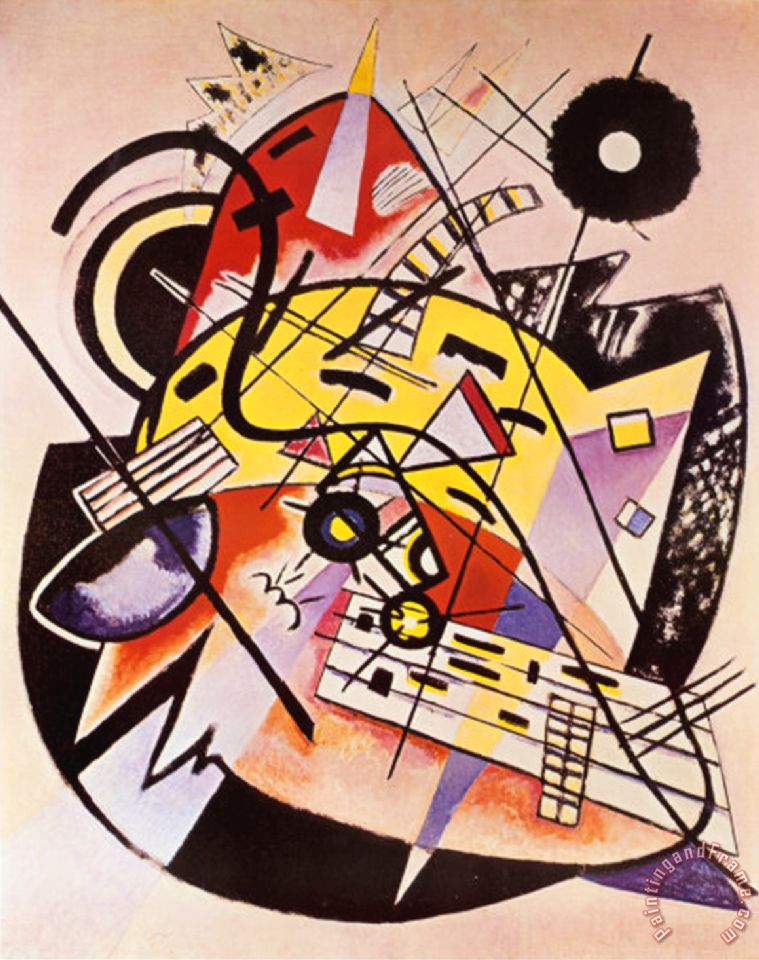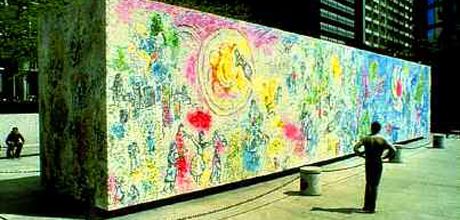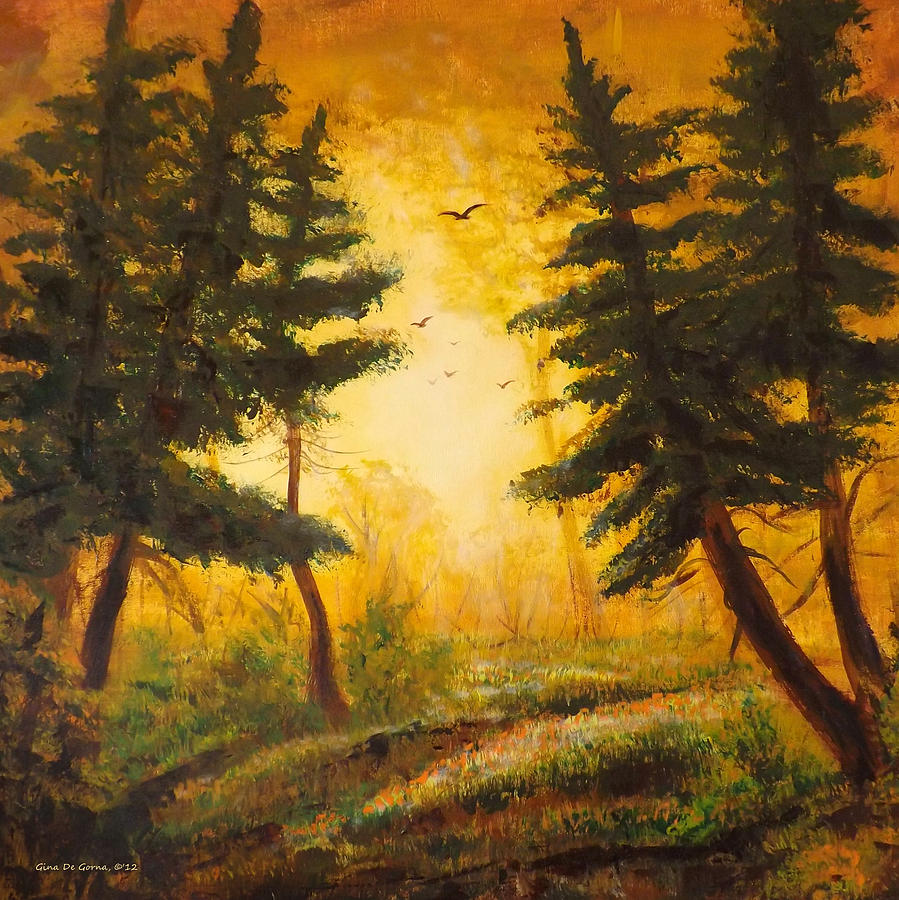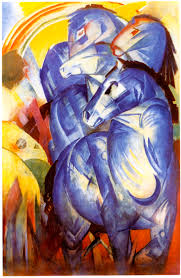Ceramics 2
Friday, May 16, 2014
Wednesday, April 30, 2014
Pop Art
Pop Art 1950-1960's
-Pop art is a reaction to abstract expressionism which strived to convey the emotion of the individual artist creating it. Pop art focused
on the mass materialistic, consumerist culture of the 1960's. The influential artists of this period reflected what they saw as life during
this era. Some characteristics include recognizable imagery drawn from popular media and products, using very bright colors, flat
imagery influenced by comic books, and newspaper photographs.
Andy Warhol
-Moon Museum, 1969.
-Campbell's Soup Cans, 1962.
-Pop art is a reaction to abstract expressionism which strived to convey the emotion of the individual artist creating it. Pop art focused
on the mass materialistic, consumerist culture of the 1960's. The influential artists of this period reflected what they saw as life during
this era. Some characteristics include recognizable imagery drawn from popular media and products, using very bright colors, flat
imagery influenced by comic books, and newspaper photographs.
Andy Warhol
-Moon Museum, 1969.
-Campbell's Soup Cans, 1962.
Abstract Expressionism
Abstract Expressionism 1945-1960
Abstract expressionism was an art movement that swept the United States after World War II. Each artist's style is different, but
paintings using the abstract expressionist style have some similar characteristics. Each piece was abstract, even those that were inspired
by, or were depictions of, the real world. Abstract expressionism rejected convention, and artists sought new ways to think about art,
and began creating art in new ways, such as Jackson Pollock's technique of dripping paint on a canvas laid on the floor.
Wassily Kandinsky
-The White Dot, 1923.

-Kallmnz

Wilhelm de Kooning
-Woman III, 1953.

-Excavation, 1950.
Abstract expressionism was an art movement that swept the United States after World War II. Each artist's style is different, but
paintings using the abstract expressionist style have some similar characteristics. Each piece was abstract, even those that were inspired
by, or were depictions of, the real world. Abstract expressionism rejected convention, and artists sought new ways to think about art,
and began creating art in new ways, such as Jackson Pollock's technique of dripping paint on a canvas laid on the floor.
Wassily Kandinsky
-The White Dot, 1923.

-Kallmnz

Wilhelm de Kooning
-Woman III, 1953.

-Excavation, 1950.
Surrealism
Surrealism 1920's-1940's
Surrealism gave artists a chance to depict images of perverse sexuality, scatology, decay and violence. It also gave them the desire to
push against the boundaries of socially acceptable behaviors and traditions in order to discover pure thought and the artist's true nature.
Fundamentally, Surrealism gave artists permission to express their most basic drives: hunger, sexuality, anger, fear, dread, ecstasy, and
so forth.
Salvador Dali
-The Persistence of Memory, 1931.

-Swans Reflecting Elephants, 1937.

Rene Magritte
-The Son of Man, 1964.
.jpg!Blog.jpg)
-The Human Condition, 1933.
Marc Chagall
-Four Seasons, 1974.

-I and the Village

Surrealism gave artists a chance to depict images of perverse sexuality, scatology, decay and violence. It also gave them the desire to
push against the boundaries of socially acceptable behaviors and traditions in order to discover pure thought and the artist's true nature.
Fundamentally, Surrealism gave artists permission to express their most basic drives: hunger, sexuality, anger, fear, dread, ecstasy, and
so forth.
Salvador Dali
-The Persistence of Memory, 1931.

-Swans Reflecting Elephants, 1937.

Rene Magritte
-The Son of Man, 1964.
.jpg!Blog.jpg)
-The Human Condition, 1933.
Marc Chagall
-Four Seasons, 1974.

-I and the Village

Cubism
Cubism 1907-1929
Cubists who painted using the analytical style of cubism, basically analyzed and broke up natural forms into little cubes or other
geometrical shapes. They used a monochromatic color scheme for these paintings. Picasso and Braque, both used the analytical style of
painting. Apart from this style, they also developed synthetic cubism. This was based on the art of creating compositions that focused
on objects together. Besides, artists also made use of the technique of mixed media.
Pablo Picasso
-The Weeping Woman, 1937

-Guernica, 1937

Georges Braque
-Violin and Candlestick, 1910.

-Little Harbor in Normandy, 1909

Paul Cezanne
-Forest, 1904.

-The Large Bathers, 1905.
Cubists who painted using the analytical style of cubism, basically analyzed and broke up natural forms into little cubes or other
geometrical shapes. They used a monochromatic color scheme for these paintings. Picasso and Braque, both used the analytical style of
painting. Apart from this style, they also developed synthetic cubism. This was based on the art of creating compositions that focused
on objects together. Besides, artists also made use of the technique of mixed media.
Pablo Picasso
-The Weeping Woman, 1937

-Guernica, 1937

Georges Braque
-Violin and Candlestick, 1910.

-Little Harbor in Normandy, 1909

Paul Cezanne
-Forest, 1904.

-The Large Bathers, 1905.
Fauvism
Fauvism 1900-1920
The first characteristic a viewer will notice on fauvist works is the intense colors used throughout the painting. Fauvists used pure and
unblended colors in a way that has nothing to do with how the human eye views an object, person or a landscape. Another deviation
from the predominant movement of the late 19th century, impressionism, was the absence of small and thin brush strokes. Disregard of
three-dimensionality does not refer to disregard of perspective, as fauvist painters made use of the technique to depict depth in objects
and landscapes. Instead, the issues that weakened the perception of depth on fauvist paintings were the seemingly autonomous bold
strokes and the lack of subtle shading.
Franz Marc
-The Tower of Blue Horses, 1913.

-Yellow Cow, 1911

Henri Matisse
-Open Window, 1905.

-The Dance, 1910
The first characteristic a viewer will notice on fauvist works is the intense colors used throughout the painting. Fauvists used pure and
unblended colors in a way that has nothing to do with how the human eye views an object, person or a landscape. Another deviation
from the predominant movement of the late 19th century, impressionism, was the absence of small and thin brush strokes. Disregard of
three-dimensionality does not refer to disregard of perspective, as fauvist painters made use of the technique to depict depth in objects
and landscapes. Instead, the issues that weakened the perception of depth on fauvist paintings were the seemingly autonomous bold
strokes and the lack of subtle shading.
Franz Marc
-The Tower of Blue Horses, 1913.
-Yellow Cow, 1911

Henri Matisse
-Open Window, 1905.

-The Dance, 1910
Post- Impressionism
Post-Impressionism 1880-1900
Post Impressionism is identified by vibrant colors, thick paint application, real life subject matter, geometric shapes, and distortion of
objects or figures for expressive effect. The Post-Impressionists were an eclectic bunch of individuals, so there were no broad, unifying
characteristics. Each artist took an aspect of Impressionism and exaggerated it. Vincent Van Gogh intensified Impressionism's already
vibrant colors and painted them thickly on the canvas.
Vincent Van Gogh
-Cafe Terrace at Night, 1888.
-The Potato Eaters, 1885.
Post Impressionism is identified by vibrant colors, thick paint application, real life subject matter, geometric shapes, and distortion of
objects or figures for expressive effect. The Post-Impressionists were an eclectic bunch of individuals, so there were no broad, unifying
characteristics. Each artist took an aspect of Impressionism and exaggerated it. Vincent Van Gogh intensified Impressionism's already
vibrant colors and painted them thickly on the canvas.
Vincent Van Gogh
-Cafe Terrace at Night, 1888.
-The Potato Eaters, 1885.
Subscribe to:
Posts (Atom)
